When HOKA reached out to me to test out their latest hybrid road/trail running shoes, the Challenger ATR 7, I was super excited to thrash them around my local mountain trail route – mostly to see how they compare to the HOKA Mafate Speed 4 trail shoes, that I love so much.
Earlier this year I reviewed the HOKA Mafate Speed 4 and I was absolutely blown away at how well they performed on challenging trails with a huge mixture of terrain types.
You can learn more about that dedicated trail running shoe in my HOKA Mafate Speed 4 review, and it’s certainly worth reading if you plan to run more trails than routes that contain say a 50:50 road/trail mix.
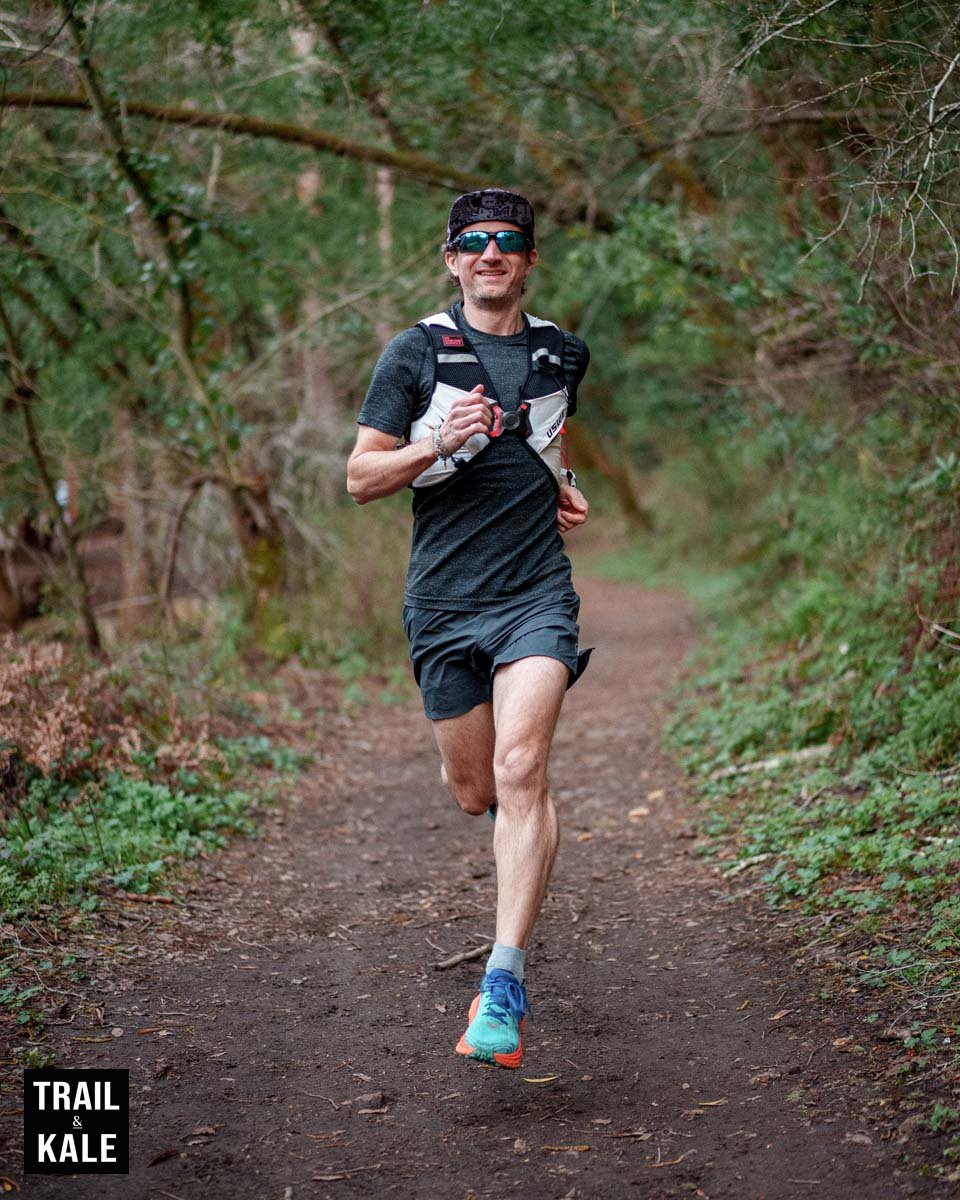
For anyone who runs on a total mix of road and trail surfaces in their daily run, whether by choice or necessity, due to having to run to a trailhead (like I do), then these HOKA Challenger ATR 7 hybrid running shoes will be a total game changer for you.
The HOKA Challenger ATR 7 takes the road-to-trail running experience to a whole new level but there are some things that you need to be aware of before you hit that buy button, all of which I’m going to share with you in this HOKA Challenger ATR 7 review.
Spoiler alert, the Challenger ATR 7 earned itself the number 1 spot in the ‘Best Road To Trail Running Shoes’ section of our Best Trail Running Shoes Buyer’s Guide.
This HOKA Challenger ATR 7 review, like all our outdoor gear reviews, is in no way sponsored by the brand but HOKA did send us the shoes to get our honest opinions in this review – and maybe even take some advice on where to take the Challenger ATR 8 next season.
HOKA Challenger ATR 7 Review Table of Contents
- Challenger ATR 7 Sizing and Fit
- Key Features that make them stand out
- Performance review
- How they compare to other premium hybrid trail shoes
- Are they worth your money?
- Review summary (with pros and cons)
- Video review | Filmed on my local trails
- Challenger ATR 7 photo gallery
HOKA Challenger ATR 7 sizing and fit
The HOKA Challenger ATR 7 road-to-trail running shoes fit true to size (as most HOKA running shoes tend to do so) when compared to other popular running shoe manufacturers like On Running, Nike, Adidas, Allbirds, and Salomon to name a few brands that you may already run in.
The HOKA Challenger ATR 7 is extremely comfortable the first time you wear them, with no breaking-in period necessary – as there shouldn’t be with a well-designed and manufactured trail running shoe.
For on-foot video footage, watch my Challenger ATR 7 video below where I also share my initial thoughts on these trail running shoes while running my local trail route here in Northern California.
The materials used in the upper are very soft too, and there’s plenty of padding in the walls – all of this contributes to a feeling of comfort that can be rare to find.
Key features worth knowing about
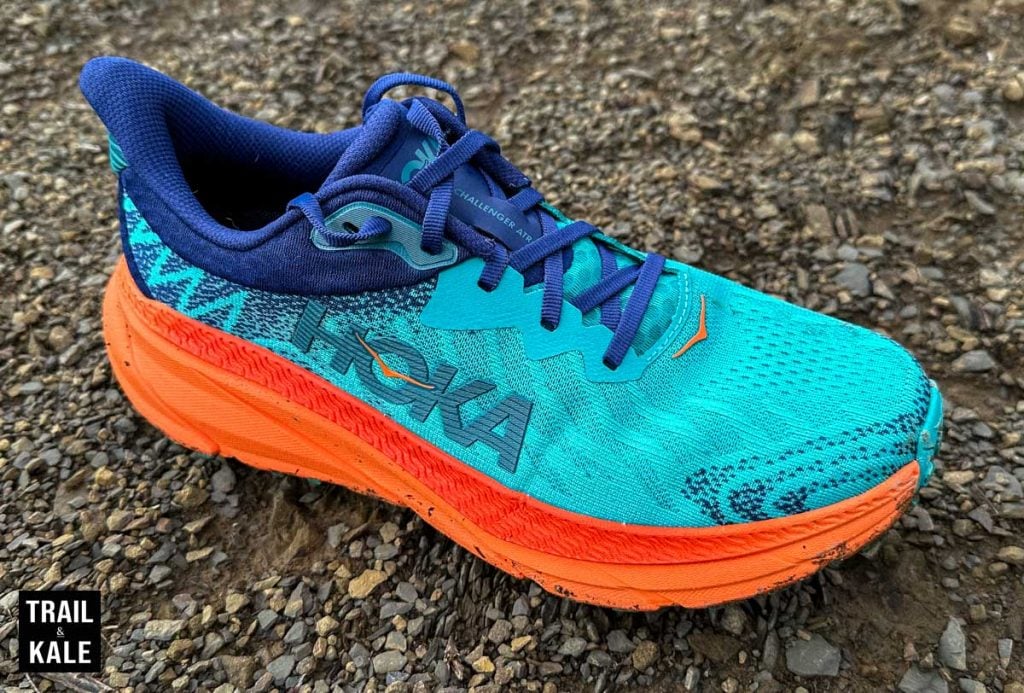
- Price – $145 at Rei.com
- Weight – 9 oz. (255g) for a US M9
- Width – medium but it’s also available in a wide version
- Midsole – Compression molded EVA foam midsole with a higher stack to increase cushioning for more comfortable miles. Although I didn’t review the Challenger ATR 6, some users had reported that the cushioning in the midsole didn’t last as long as they would have liked.
- Drop – 5 mm drop. This is perfect for technical trails and all-mountain running.
- Aesthetics – I think this trail running shoe has a beautiful silhouette with a really vibrant colorway that I love.
The best price I’ve found for the HOKA Challenger ATR 7 is $145 at rei.com, which is great value for money for such a high-performance trail running shoe.
Let’s go over some of the key features in more detail then.
HOKA Challenger 7 weight
It weighs 9 ounces for a size US 9 men’s which is extremely lightweight for a shoe with so much protection, padding on the upper, and cushioning in the midsole.
Stack height and drop
The Challenger 7 has a fairly high stack height when compared to other trail running shoe brands but you’re probably used to seeing this with other HOKA running shoes.
A heel stack height of 31mm and forefoot height of 26mm gives the Challenger ATR 7 a drop from heel to toe of 5mm – and I love how this feels.
Anyone who has followed Trail & Kale for a while and all my running shoe reviews over the years will know I’m not a fan of high-drop shoes, especially when it comes to running technical trails, as you lose so much control.
The control and trail feel you get from having a lower drop is far superior when running technical trails.
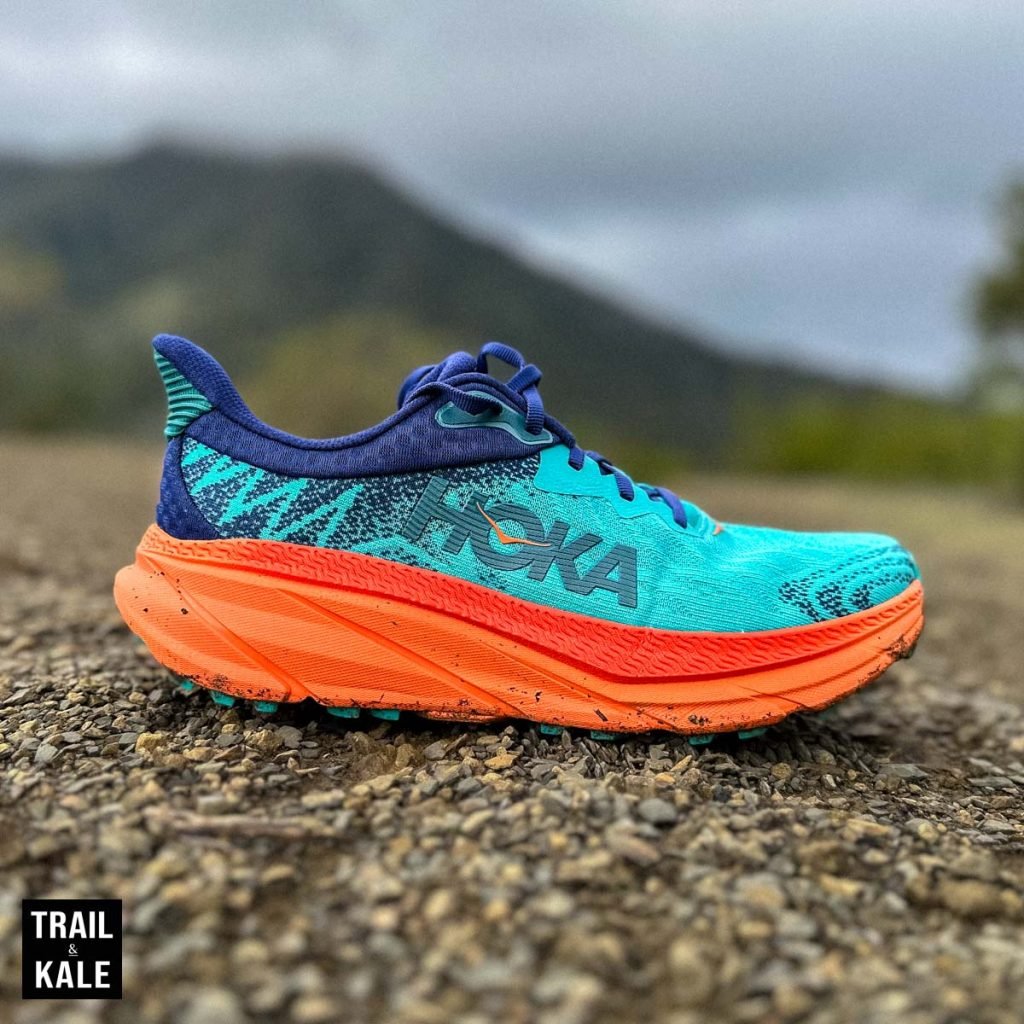
I have always recommended a lower drop as in my experience it reduces the chance of getting the most common running injuries like plantar fasciitis, Achilles tendinitis, and shin splints.
Not only does it give you a better feel for the trails but it puts you in a more natural running stance, resulting in a better running form. With a low drop and a low stack, you can really feel the trail and use the proper biomechanics of your ankles and feet.
There are a lot of bones in your feet – so it’s really important to be able to have your style and stance as natural as possible when you’re on the trails.
This is because there’s a lot of stabilization that your joints, bones, and muscles need to be doing in order to trail run like a boss.
So, the more you can leave things like stabilization to your natural biomechanics, the better.
My post all about how to try barefoot running explains the reasoning behind why you should give low-drop (or zero-drop) running shoes a try.
Challenger 7’s midsole plush cushioning
This midsole has an awesome amount of cushioning to provide total comfort underfoot while at the same time the perfect amount of responsiveness as you leap over rocks, mud, and puddles, as you can see in my YouTube video below.
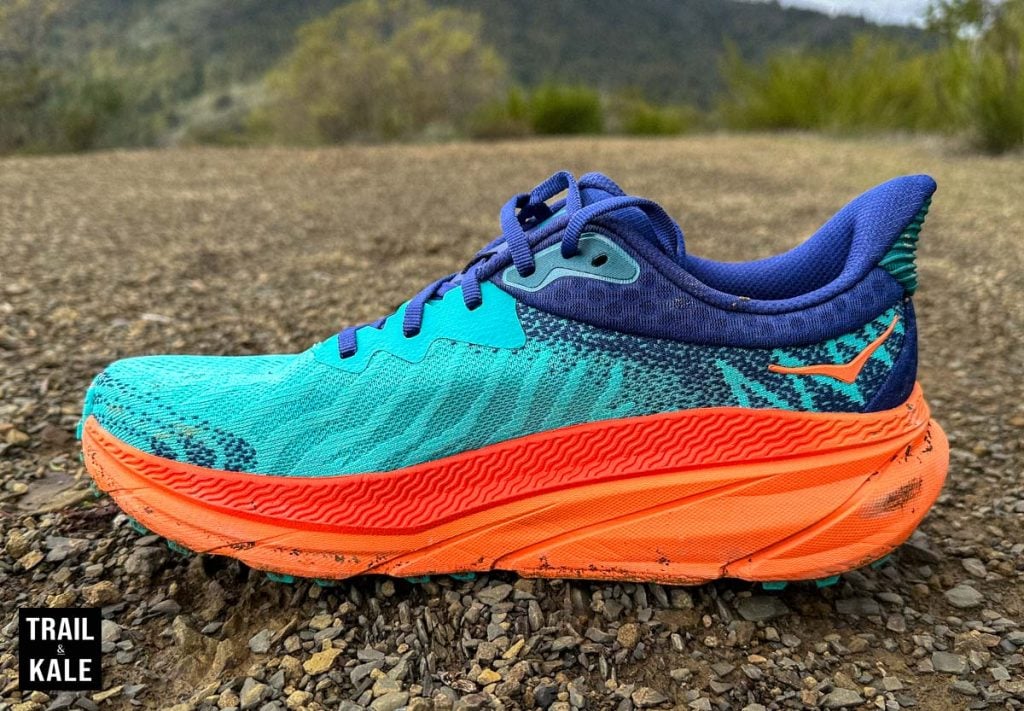
There’s enough midsole protection to stop any spiky rocks on the trails from actually being felt when you run over them, which is a good thing as there’s no rock plate in the Challenger 7.
Rock plates create extra weight anyway and there’s no need for one in these trail running shoes due to the highly protective midsole foam.
Even though this midsole does have a relatively high stack, no stability or control is lost – I just love what they’ve done with it.
Outsole traction
The Durabrasion rubber outsole with 4mm lugs is very effective on most terrain but not to the exceptional standard of the Vibram Megagrip with Litebase construction and 5mm traction lugged outsole found on the HOKA Mafate Speed 4 when it comes to deep mud and super slick rocks.
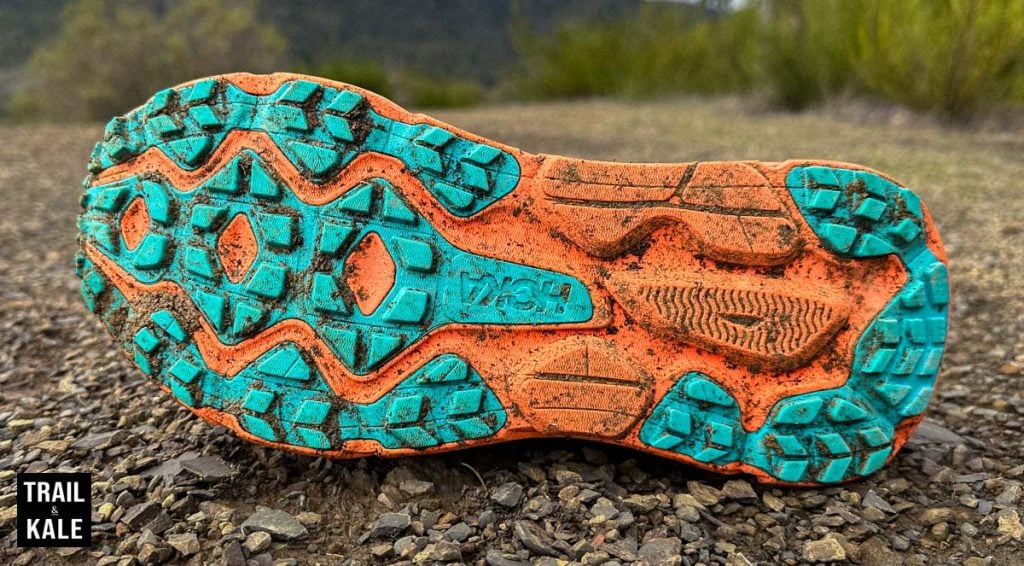
With that said, if you enjoy running on really technical trails with steep up-and-down hills with mud patches and slick rocky sections then I’d recommend learning more about the Mafate Speed 4.
The Challenger 7, however, is a more affordable option for everything else, including running on road sections.
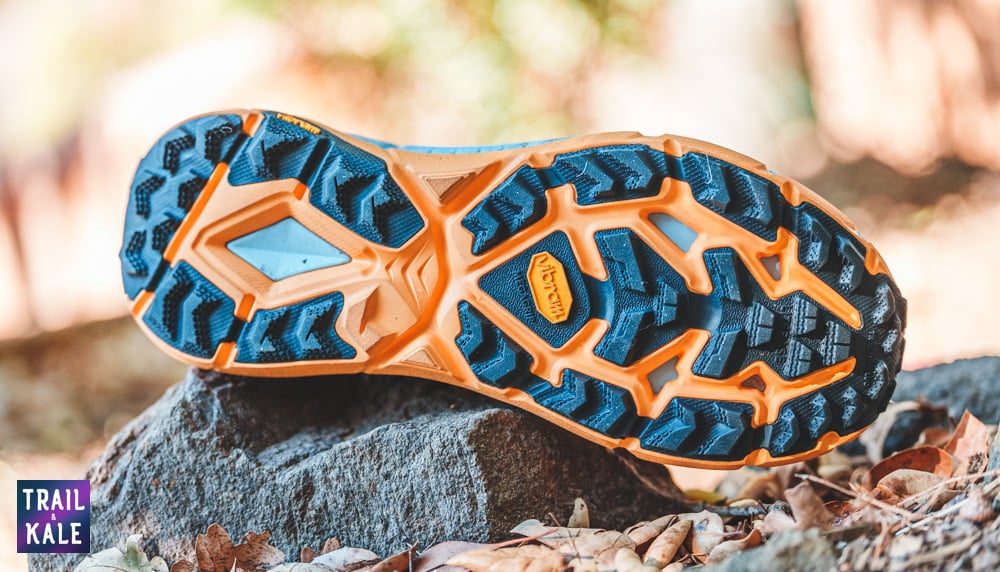
Here’s a closer look at the Durabrasion rubber outsole with 4mm lugs on the Challenger 7 road-to-trail running shoes.
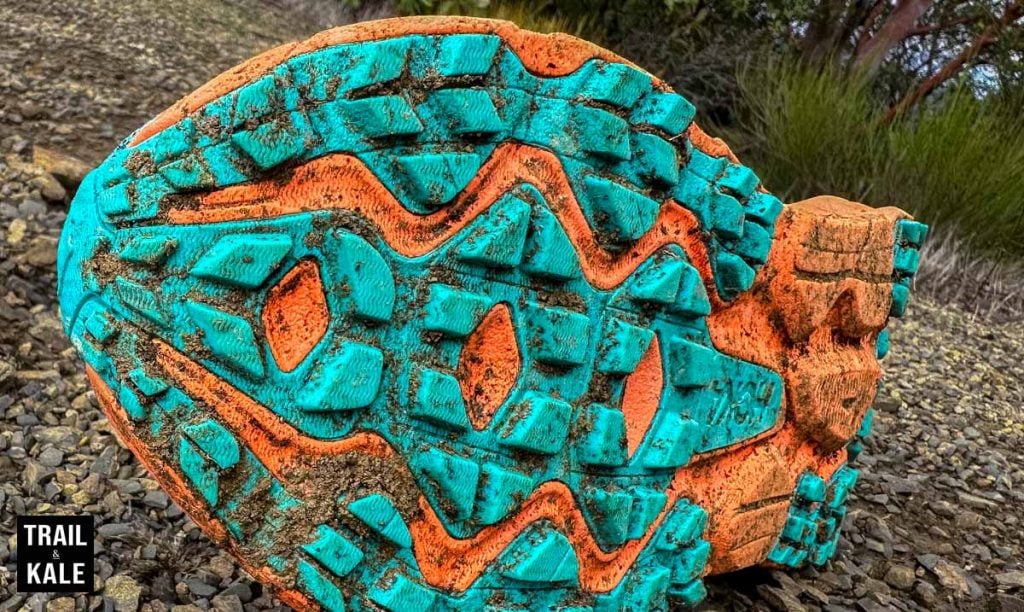
HOKA Challenger ATR 7 width
The HOKA Challenger 7 is regular width and there’s enough room in the toe box for your feet to splay which keeps your feet happy during long runs.
If you have wide feet, there is a wide version available too.
Tongue and lacing system
The tongue has lots of padding and feels very comfortable while running and the laces are simple but very effective at what they’re designed to do, which is ‘do up’, stay ‘done up’, and provide a small amount of stretch as your feet move during a run.
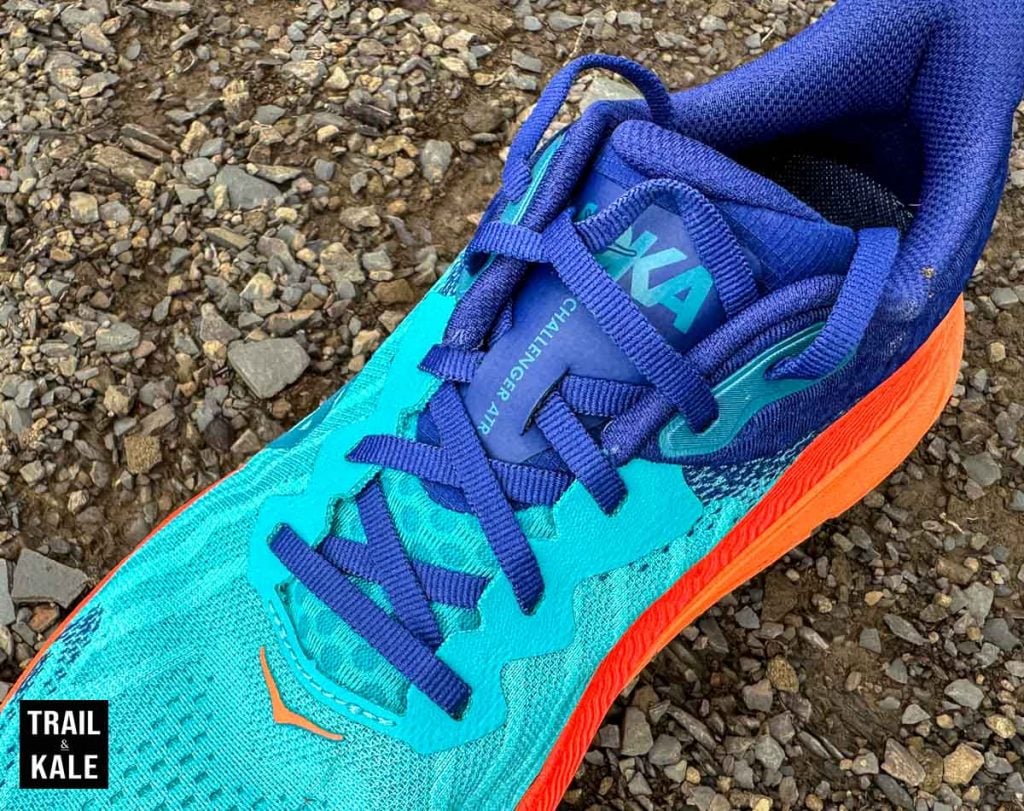
Let’s talk about that extended heel pull and Achilles support
There’s no finger loop at the rear, unfortunately, which can help get the shoes on nice and easy but having said that, the Challenger 7 does go on easily due to that extended heel pull feature at the rear – which I love for another reason…
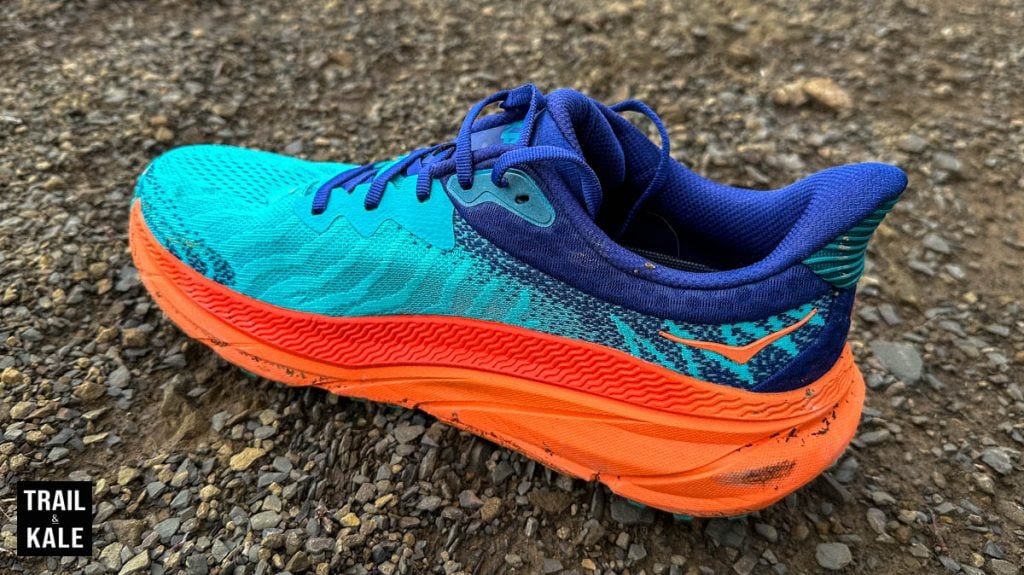
The awesome ‘backstay’, ‘heel counter’, or ‘extended heel pull’ that HOKA likes to call it is such a great way of supporting the Achilles heel while running.
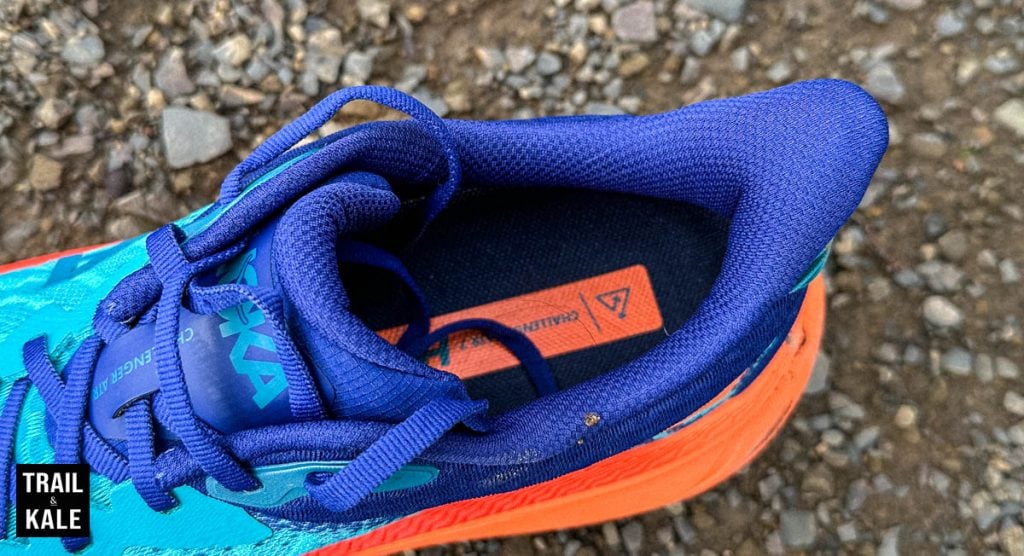
If you’ve ever had Achilles tendinitis in the past, you’ll love this feature! There are more pictures of this heel support feature in the gallery below.
Toe protection
There’s also a bit of a toe cap at the front thanks to the rubber wrap-around outsole which will protect your toes if you stub any rocks or roots.
Challenger 7’s Upper construction
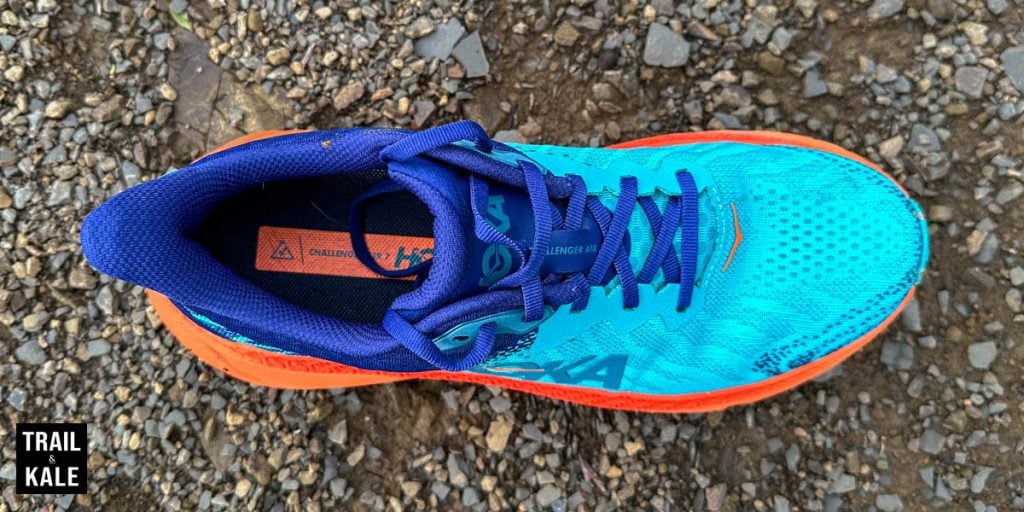
The upper is very well made, highly durable, and has a nice design. It’s also breathable, however, it’s not the most breathable shoe out there.
The Nike Pegasus Trail 4 (a comparative road-to-trail shoe), for example, is better in that regard but honestly, my feet have remained cool on my runs with these running shoes so far.
The fact that they aren’t super breathable makes them the perfect shoes for shoulder season running, running in cooler conditions, or simply if you prefer to keep your feet at a mild temperature, rather than cool while running.
HOKA Challenger ATR 7 performance review
The Challenger 7 is Hoka’s latest hybrid trail-to-road running shoes so of course I was super excited to take them out on my local route, which is the perfect testing ground for any all the trail running shoes that get sent my way by brands.
The route is 10 kilometers long, mostly trail, but there are some road surfaces as well, including a 1km road run to get to the trailhead from my front door.
There are also about 300 meters of vertical ascent on the route, just to set the scene for you – my video below shows the type of terrain and beautiful Northern California scenery in my detail.
I love doing this run because it gives me a perfect trail loop that incorporates tons of different types of terrain. There’s gradual and steep climbing, steep downhills, and flat sections.
These flat sections really allow me to unleash top speed in running shoes that I’m testing.
So, how do the HOKA Challenger ATR 7’s actually perform while running different types of trails? Read on to find out:
Running on road surfaces
On asphalt, tarmac, or concrete pavements/sidewalks/paths they stick to the surface really well and provide wonderful comfort at the same time.
They really do feel like road running shoes but with lugs that are raring to go when you take them onto the trails.
I have a short run on pavements before I get to my local trailhead, and oh my goodness, the Challenger 7 performs superbly on hard tarmac/concrete surfaces.
The only downside of such grippy 4mm lugs when running on road surfaces is that you do hear them clawing into the sidewalk as you run – but that means they’re working right?
They perform so well in fact, that they feel like road running shoes but with extremely grippy lugs on the outsole.
How do they perform on different types of trails?
On most trails and mountain terrain including rocky, hard-packed, gravel, dusty, or forested single track they are absolutely amazing. This goes for all the same types of trails in the wet too apart from extremely slick rocks and deep mud!
In that scenario, you’ll wish you had your HOKA Mafate Speed 4 with you.
The HOKA Challenger 7 is now my favorite hybrid road-to-trail running shoe due to how well it performed in my testing across multiple terrain types! See the full list of the best trail running shoes available right now.
If you follow my training on Strava you’ll see the sorts of trail routes I like to run, and use to test new trail running shoes.
I like to climb steep and descend fast over technical trails, so my trail shoes need to be able to cope with that type of running – and the HOKA Mafate Speed 4 does it better than anything other trail running shoes I have tested to date.
When it comes to fast runs on light trails, however, I choose to wear the HOKA Challenger ATR 7 as they’re lighter, and faster for these situations.
If you are on Strava, be sure to join the Trail & Kale running club with thousands of other runners.
The durability of this rubber so far has been very good too, which is not typical of sticky rubber on outsoles.
Most sticky rubber outsoles I’ve experienced in the past have durability issues that are noticeable after my first trail run.
To be fair, I do tear up the trails when I test new shoes, and there are just under 2 miles of tarmac included in my test route lol.
What are they like for running/hiking steep uphills?
As I briefly mentioned earlier, the outsole has 4mm lugs that aren’t the best for clawing into the terrain when running up hills and down steep terrain, the Mafate Speed 4 does that much better.
Having said that they’re not that bad at all for a hybrid running shoe that needs to perform well both on the road and trails.
What are they like for steep downhill running?
Similarly to the uphills, running steep downhills in the Challenger 7 is ok on hardpacked terrain that doesn’t have too much loose rock or dirt.
When it comes to thick mud, gravel, or dry dusty dirt that breaks away when you’re running fast down steep gradients, there are definitely better trail shoes for the task – yes, once again, the Mafate Speed 4.
The HOKA Challenger 7 has performed exceptionally well in my tests for a hybrid running shoe that can tackle most (but not all) terrain in a way that feels comfortable underfoot, and still keeps YOU in control.
How do they compare to other trail running shoes available at the moment?
The Challenger ATR 7 has earned itself an Editor’s Choice Award for making it to the number 1 spot in our Hybrid Road/Trail running shoes section of our Trail Running Shoes Buyer’s Guide.
Are they worth the money?
YES! You’re going to love running in the HOKA Challenger ATR 7 if you decide to buy them because you run on roads and trails.
Still not sure which HOKA running shoes are for you? Head over to our Best HOKA Running Shoes Buyer’s Guide next.
HOKA Challenger ATR 7 review summary (rating with pros and cons)
[letsreview]
I have left you with some more photos of the Challenger ATR 7 below, and also my YouTube video review. Enjoy, and see you on the trails!
HOKA Challenger ATR 7 Video Review
Get some of my thoughts from the trails as I push the HOKA Challenger to its limits! Don’t forget to subscribe to our YouTube Channel for more outdoor gear reviews.
More Challenger ATR 7 Photos
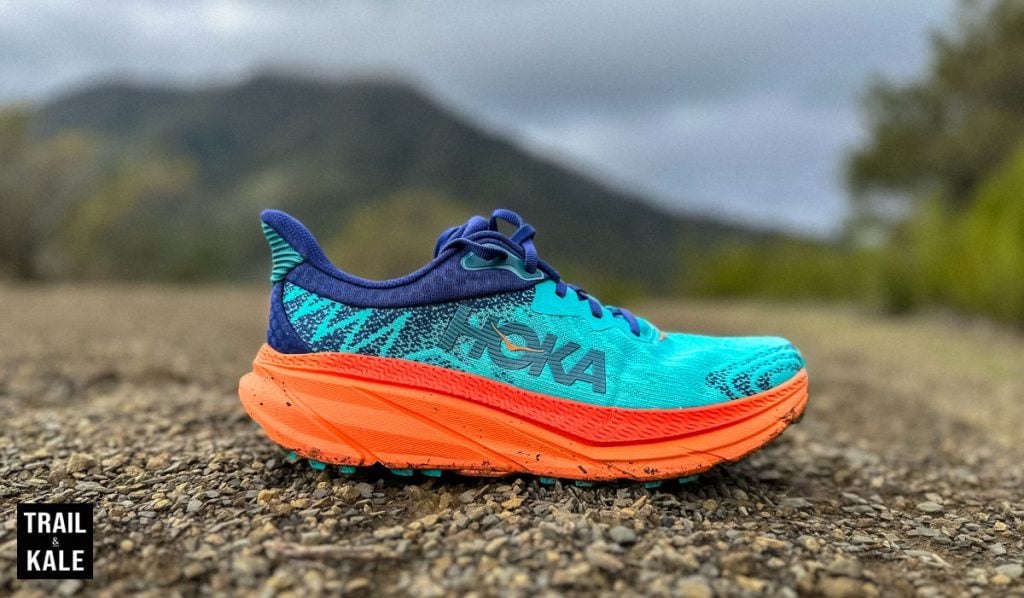
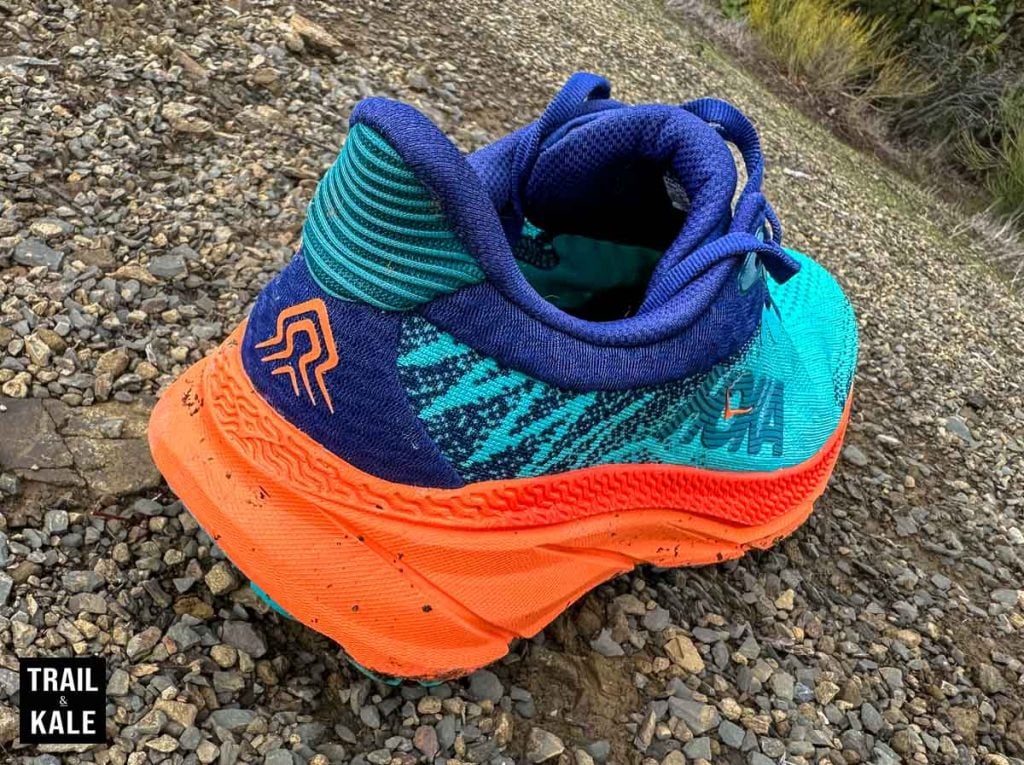




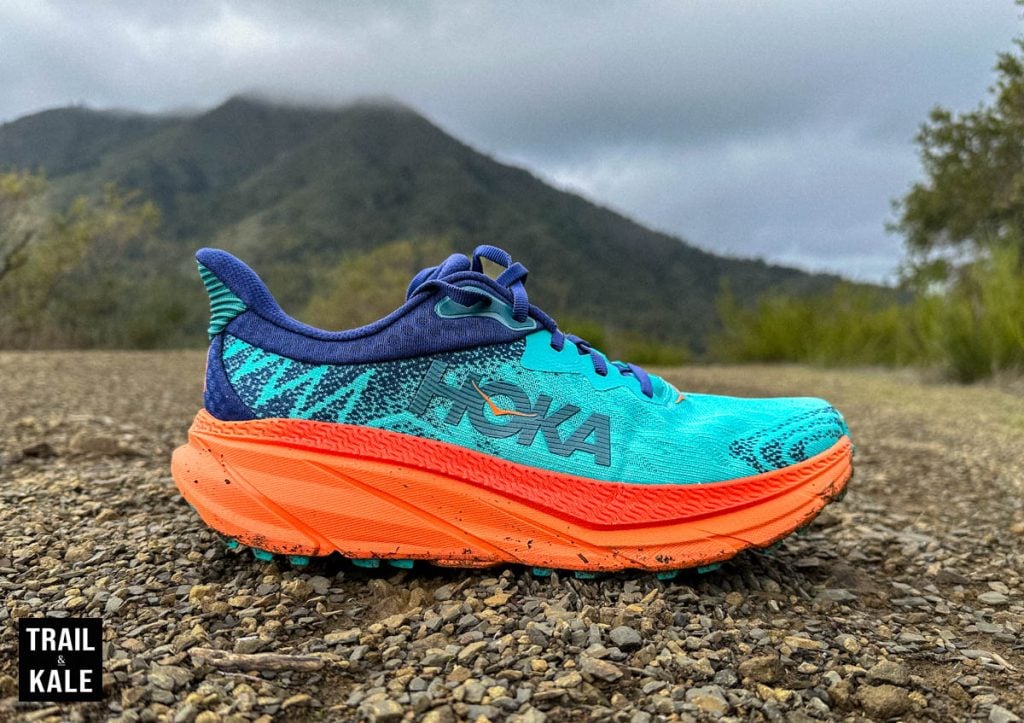






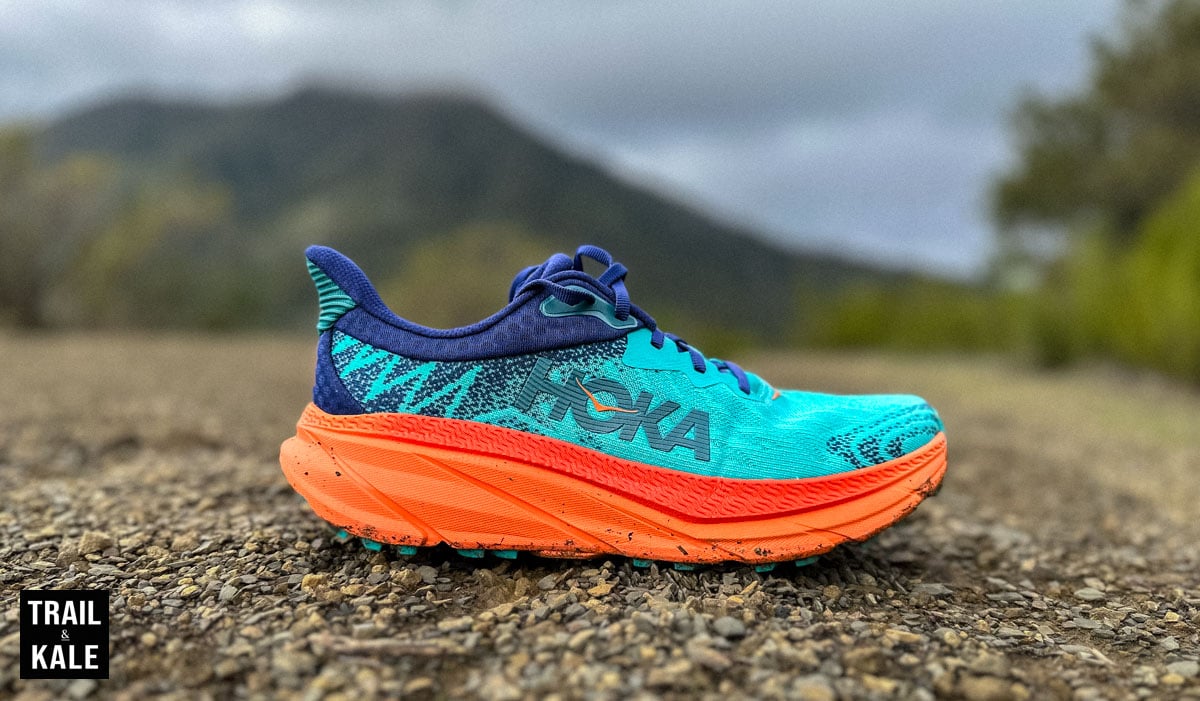
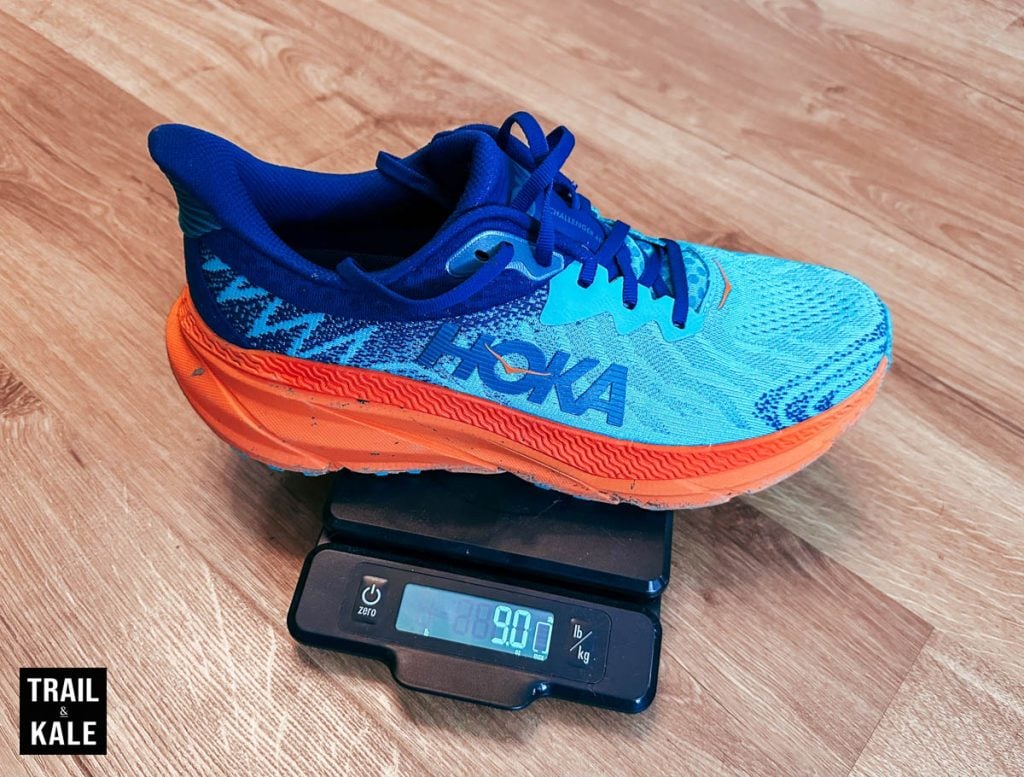


![The Best Trail Running Shoes [2024] The Best Trail Running Shoes [2024]](https://www.trailandkale.com/wp-content/uploads/2024/02/best-trail-running-shoes-Trail-and-Kale-Recommends-2024-110x75.webp)

![The Best Running Shorts For Men [Road & Trail-worthy] The Best Running Shorts For Men [Road & Trail-worthy]](https://www.trailandkale.com/wp-content/uploads/2023/05/Best-Running-Shorts-For-Men-Trail-and-Kale-Approved-110x75.jpg)
![The Best Running Shoes [2024] The Best Running Shoes [2024]](https://www.trailandkale.com/wp-content/uploads/2024/02/best-running-shoes-Trail-and-Kale-Recommends-2024-alt-image-4-110x75.webp)


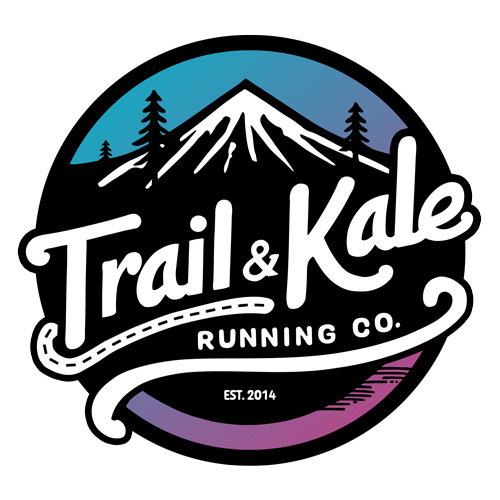
Hi great review. There’s no mention as to whether you think that they would be better in a goretex version? As per previous models. What are your thoughts on this?
Hi Gemma,
I don’t believe the Challenger 7 GTX is out yet. That said, Gore-tex running shoes tend to be heavier, stiffer, and less breathable. I prefer running in non GTX running shoes personally.
Best,
Alastair
The author’s detailed and informative review provided valuable insights into the features and performance of the Hoka Challenger ATR 7 shoes. What I found particularly unique about the article was the balanced perspective that highlighted both the strengths and potential limitations of the shoes, allowing readers to make an informed decision based on their specific needs. The inclusion of personal experiences and anecdotes added a relatable touch to the review, making it engaging and enjoyable to read. Overall, this article is a fantastic resource for anyone seeking a positive and comprehensive review of the Hoka Challenger ATR 7 shoes, whether they are road runners looking to venture onto trails or dedicated trail runners in need of reliable footwear.